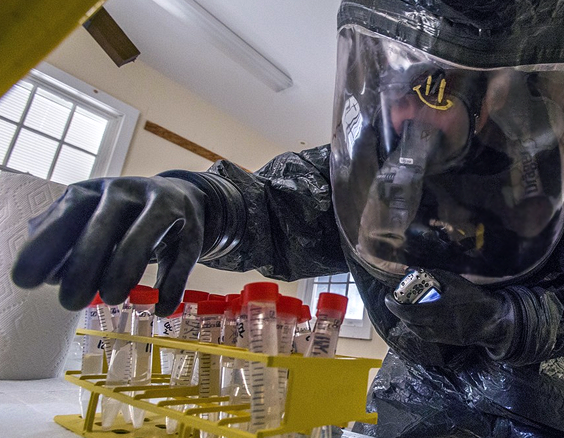This article is part of World War “V”: The COVID-19 Pandemic, a collection of all CNS COVID-19-related articles.
April 24, 202
The following is an excerpt of an article in The Economist. The full article can be read with free registration.
The coronavirus that has killed over 180,000 people worldwide was not created with malice. Analysis of its genome suggests that, like many new pathogens, it originated by natural selection rather than human design. But if SARS-COV-2 had been deliberately engineered or launched into the world by malefactors, the consequences might have been much the same. “Covid-19 has demonstrated the vulnerability of the us and global economy to biological threats, which exponentially increases the potential impact of an attack,” says Richard Pilch of the Middlebury Institute of International Studies. Those concerns are prompting renewed interest in the threat from biological weapons, a lurid corner of warfare that normally languishes in happy obscurity.

Army survey team member inspects vials at a simulated crime scene during a training exercise. Source: www.defense.gov, Master Sgt. Mark Olsen
In theory, bioweapons are banned. Most countries in the world are party to the Biological Weapons Convention (BWC) of 1975, which outlaws making or stockpiling biological agents for anything other than peaceful purposes. But some countries probably make them secretly, or keep the option close at hand. America accuses North Korea of maintaining an offensive biological-weapons programme, and alleges that China, Iran and Russia dabble in dual-use research. Toxins like ricin have also been bought and sold on shady recesses of the internet known as the dark web.
Germ warfare briefly rose to prominence in September 2001, when letters laced with anthrax spores were mailed to American news organisations and senators, killing five people. That was a wake-up call. Public health became part of national security. BioWatch, a network of aerosol sensors, was installed in more than 30 cities across America. But in recent years threats from chemical weapons, like the sarin dropped by Syria’s air force and the Novichok smeared on door handles by Russian assassins, took priority.
Though the Trump administration published a national biodefence strategy in 2018, it shut down the National Security Council’s relevant directorate and proposed cuts to the laboratories that would test for biological threats. Funding for civilian biosecurity fell 27% between fiscal years 2015 and 2019, down to $1.61bn—less than was spent on buying Black Hawk helicopters. “It’s the kind of thing that’s very easy to cut where you don’t see the damage you’re doing until you’re in a situation like this,” says Gigi Gronvall of the Johns Hopkins Centre for Health Security.
Biological weapons are now likely to rise up the agenda, though the lessons from covid-19 are not clear-cut. The Department of Homeland Security warns that extremist groups have sought to spread the virus deliberately, and Mr. Pilch says that it “has challenged some long-standing assumptions regarding what biological agent may be used as a weapon”. Yet many pathogens used as weapons tend to differ from respiratory viruses in important ways.
Continue reading at The Economist. The full article can be read with free registration.
